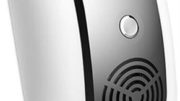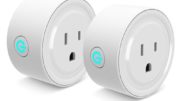Who all are wishing for a more comfortable life? As it turns out, a huge chunk of the population, nearly everybody wishes a more comfortable life for themselves. “Necessity is the mother of invention!” Rightly said! Automation grew from this desire to make life easier and comfortable. Automation is the process of reducing redundancy by making the various processes automatically without any form of human intervention.
Home Automation
Home Automation is no different. There was a need to develop more sustainable and efficient methods of operating home appliances. To bring down the energy costs, unwanted usage and aid in making life more comfortable, without worrying about these issues anymore. Home Automation is the process of automating your home devices and appliances so that you do not have to be physically present for switching on or off, triggering alarms, and doing tasks like closing windows in the evening, etc.
Now you may wonder What an IoT device is? And what roles does this play in Home Automation? And how does it integrate within your home? etc. Let’s understand the various topics involved in Home Automation in detail for more clarity.
IoT Device
IoT or the Internet of Things is the network of many devices and appliances that connect with the help of sensors, software, and many other methods for exchanging data through the Internet. So the Internet helps to make a web of these devices that can interact and trigger each other to get the work done. IoT is technology. Actual devices that use this technology of IoT are IoT devices, and the work that you can get done with the help of these wide-ranging IoT devices comes under Home Automation. So IoT devices are an essential part of Home Automation. At Solid Signal, which is more than just an online retailer of high-tech equipment to tech-savvy consumers, we have VENTEV IOT MicroSolar Kit and EnGuardian Kit HD Camera and IoT Gateway based on Home Automation using Internet of things. With more and more development going behind IoT devices, there is a rising demand for these devices. Gartner forecasted in 2018 that 14.2 billion connected devices will be in use in 2019 and will reach 25 billion in 2021. With the pandemic hitting the market badly, Gartner is sure that the whole sector will rebound very quickly.
How will an IoT-based Home Automation System work?
There are several components for Home Automation Systems that you must understand to comprehend their connected working. These components are:
- Controller or Hub
- Smart Devices
- Wireless Communication
- Connectivity
- Real-Time Monitoring
Home Automation works with Cloud or local internet servers. Every IoT device and sensor is wirelessly connected to Hub, which receives their signals and transmits them to these internet servers or the Cloud. Users can connect to their home appliances and devices through the Cloud, which will send the input from the user directly to the Hub, which then transmits back the signals to sensors to get the job done. Once the change has been achieved, the update is transmitted via the Cloud to the user. Let’s discuss each of these components in brief to understand their role in making our lives easier.
Controller or Hub
Controller or Hub is an integral part of any Home Automation process. It is also called Gateway. Now consider that your home has single or multiple IoT-based devices, sensors, or any appliances. All of these devices and their sensors connect with the Hub. The controller is the Gateway for transmitting signals to and fro.
This Hub acts as the central point of communication to all the IoT-based devices in a home. It can be controlled from distant or remote locations with the help of the Cloud.
Smart Devices
There are many devices for various applications. And no single device can provide all the functionalities inside a home. So, you must decide which process or activity must undergo Automation and which does not. IoT devices are penetrating the market for a wide range of applications. And this trend is only growing upwards. So, it’s up to you to decide which device will fit inside your home based on your convenience. You could start small, with fewer devices, and with time you can add more or reduce based on your liking. All the Smart Devices in the Home Automation are integrated into a mesh-style network configuration. This arrangement of sensors in a mesh allows them to interact with each other via the Gateway.
Wireless Communication
Wireless Communication is the lifeline of these Home Automations, as they reduce the wiring, physical components and bring minimalism back to Home Decorations. All these devices follow widely used wireless communication protocols that are Wi-Fi, ZigBee, Bluetooth, Z-Wave, etc. Since all of these are connected in a mesh configuration, signals always take the shortest distance to reach the Hub. In case your Hub is far away from the sensor, you can use a Signal amplifier in between your sensor and Hub, to amplify the signal so that it can reach the controller.
Connectivity
You can set up a local Internet Server to store and process data, but that adds to extra costs and reduced features. That’s why nearly all Home Automation systems are using the Cloud. It gives the user the required flexibility to access his devices through their smartphone.
Real-Time Monitoring
For all this to work smoothly, there must be Real-time monitoring to detect any change and take decisions based on pre-configured settings. Or for setting up scheduled instructions, it needs to have a monitoring process. The Cloud will store all this data safely and provide you with output that will be updated automatically.
Summing Up
As we have discussed, it takes time to finalize which IoT device to choose from and how to integrate them with the Home Automation to get maximum output. Take your time and set it up and relax. These systems will take care of themselves.





